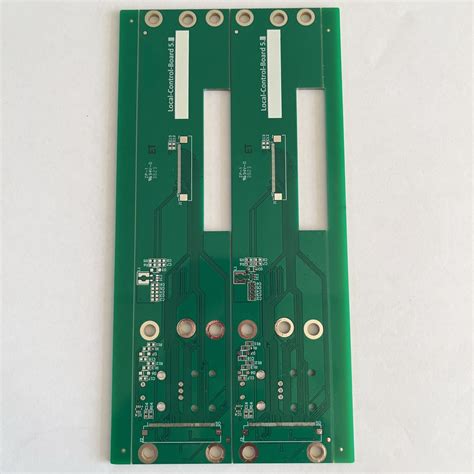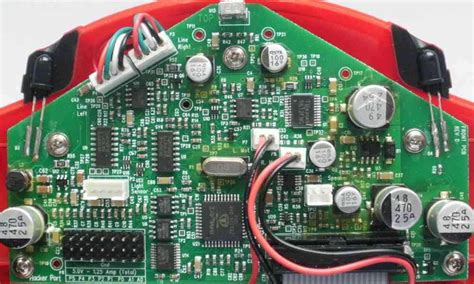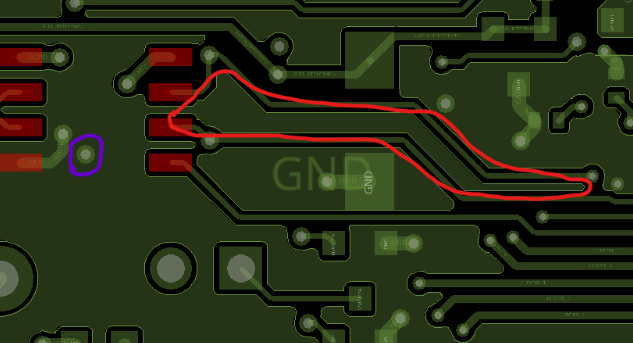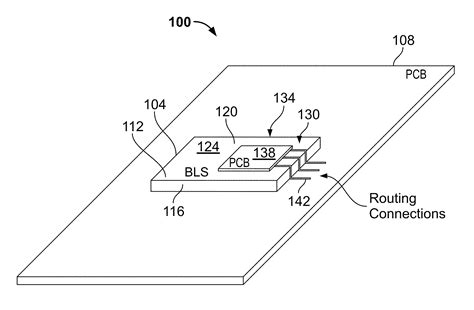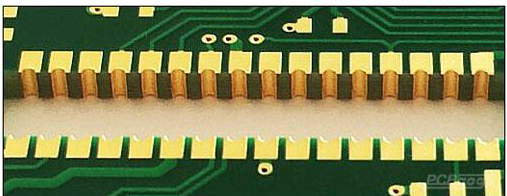Integrated press hole rogers pcb
Advantages Of Integrated Press Hole Technology In Rogers PCB Design
Integrated press hole technology in Rogers PCB design offers a multitude of advantages that significantly enhance the performance and reliability of printed circuit boards. As electronic devices become increasingly complex and demand higher performance, the need for advanced PCB technologies has never been more critical. Integrated press hole technology addresses these demands by providing a robust solution that improves the electrical and mechanical properties of PCBs, particularly those made with Rogers materials, which are renowned for their high-frequency performance.
One of the primary advantages of integrated press hole technology is its ability to enhance signal integrity.
In high-frequency applications, maintaining signal integrity is crucial to ensure that the device functions correctly. Traditional via technologies can introduce parasitic inductance and capacitance, which can degrade signal quality. However, integrated press hole technology minimizes these parasitic effects by providing a more direct and efficient path for signal transmission. This results in reduced signal loss and improved overall performance, making it an ideal choice for RF and microwave applications where Rogers PCBs are commonly used.
Moreover, integrated press hole technology contributes to improved thermal management.
As electronic devices operate at higher speeds and power levels, effective heat dissipation becomes essential to prevent overheating and ensure longevity. The design of integrated press holes allows for better thermal conductivity, facilitating the efficient transfer of heat away from critical components. This is particularly beneficial in Rogers PCBs, which are often used in applications that generate significant amounts of heat, such as power amplifiers and antennas. By enhancing thermal management, integrated press hole technology helps maintain optimal operating temperatures, thereby extending the lifespan of the device.
In addition to electrical and thermal benefits, integrated press hole technology also offers mechanical advantages.
The structural integrity of a PCB is vital to withstand the physical stresses encountered during manufacturing, assembly, and operation. Integrated press holes provide additional mechanical support, reducing the risk of delamination and other structural failures. This is especially important in Rogers PCBs, which are frequently used in demanding environments such as aerospace and defense applications. The enhanced mechanical stability ensures that the PCB can endure harsh conditions without compromising performance.
Furthermore, integrated press hole technology can lead to cost savings in the manufacturing process.
By streamlining the design and reducing the number of processing steps required, this technology can lower production costs and improve yield rates. The simplification of the manufacturing process also reduces the likelihood of defects, leading to higher quality and more reliable PCBs. For companies utilizing Rogers materials, which can be more expensive than traditional FR-4 substrates, these cost savings are particularly advantageous.
In conclusion, integrated press hole technology offers a range of benefits that make it an attractive option for Rogers PCB design. By enhancing signal integrity, improving thermal management, providing mechanical stability, and reducing manufacturing costs, this technology addresses the key challenges faced in high-performance electronic applications. As the demand for advanced PCBs continues to grow, integrated press hole technology is poised to play a crucial role in meeting the evolving needs of the industry, ensuring that devices can operate efficiently and reliably in even the most demanding conditions.

Enhancing Signal Integrity With Integrated Press Hole Rogers PCBs
In the ever-evolving landscape of electronic design, the demand for high-performance printed circuit boards (PCBs) has never been more critical. Among the various innovations in PCB technology, the integration of press holes in Rogers PCBs stands out as a significant advancement, particularly in enhancing signal integrity. As electronic devices become more compact and complex, maintaining signal integrity is paramount to ensure optimal performance and reliability. Integrated press hole Rogers PCBs offer a promising solution to this challenge by providing a robust platform that minimizes signal loss and interference.
Rogers PCBs are renowned for their superior dielectric properties, which make them ideal for high-frequency applications.
These materials are specifically engineered to support the transmission of high-speed signals with minimal loss, making them a preferred choice for RF and microwave circuits. The integration of press holes into these PCBs further enhances their capabilities by facilitating better connectivity and reducing parasitic effects. Press holes, also known as via-in-pad plated over (VIPPO) or filled vias, are strategically placed to create a seamless connection between different layers of the PCB. This integration is crucial in minimizing the inductance and capacitance that can adversely affect signal integrity.
Moreover, the use of integrated press holes in Rogers PCBs helps in reducing the overall size of the board.
By allowing for more efficient routing of traces and connections, designers can achieve a more compact layout without compromising on performance. This is particularly beneficial in applications where space is at a premium, such as in mobile devices and aerospace systems. The reduction in board size not only contributes to a lighter and more compact device but also enhances thermal management, as there is less material to dissipate heat.
In addition to size reduction, integrated press holes contribute to improved signal integrity by minimizing the potential for signal reflection and crosstalk.
Signal reflection occurs when a signal encounters an impedance mismatch, causing it to bounce back towards the source. This can lead to data corruption and loss of signal quality. By providing a more direct path for signal transmission, press holes help in maintaining consistent impedance levels across the board, thereby reducing the likelihood of reflection. Similarly, crosstalk, which is the unwanted transfer of signals between adjacent traces, is mitigated through the strategic placement of press holes, ensuring that signals remain isolated and interference-free.
Furthermore, the manufacturing process of integrated press hole Rogers PCBs is designed to ensure high precision and reliability.
Advanced fabrication techniques, such as laser drilling and controlled depth plating, are employed to create press holes with exacting tolerances. This precision is essential in maintaining the integrity of high-frequency signals, as even minor deviations can lead to significant performance issues. The reliability of these PCBs is further enhanced by the inherent stability of Rogers materials, which are resistant to environmental factors such as temperature fluctuations and humidity.
In conclusion, integrated press hole Rogers PCBs represent a significant advancement in the quest for enhanced signal integrity. By combining the superior dielectric properties of Rogers materials with the innovative use of press holes, these PCBs offer a robust solution for high-frequency applications. As electronic devices continue to demand higher performance and smaller form factors, the role of integrated press hole Rogers PCBs in ensuring signal integrity will undoubtedly become increasingly important. Through their ability to minimize signal loss, reduce board size, and improve overall reliability, these PCBs are poised to play a crucial role in the future of electronic design.

Manufacturing Challenges And Solutions For Integrated Press Hole Rogers PCBs
The manufacturing of integrated press hole Rogers PCBs presents a unique set of challenges that require innovative solutions to ensure high-quality outcomes. As the demand for advanced electronic devices continues to grow, the need for reliable and efficient printed circuit boards (PCBs) becomes increasingly critical. Rogers PCBs, known for their superior performance in high-frequency applications, are particularly valued in industries such as telecommunications, aerospace, and defense. However, the integration of press holes into these PCBs introduces complexities that manufacturers must address to maintain the integrity and functionality of the final product.
One of the primary challenges in manufacturing integrated press hole Rogers PCBs is the precise drilling required to create the press holes.
These holes must be accurately positioned and sized to accommodate components and ensure proper electrical connections. Any deviation in the drilling process can lead to misalignment, which may compromise the performance of the PCB. To overcome this challenge, manufacturers employ advanced drilling technologies, such as laser drilling and computer numerical control (CNC) machines, which offer high precision and repeatability. These technologies enable the production of press holes with tight tolerances, thereby enhancing the reliability of the PCBs.
In addition to drilling precision, the material properties of Rogers laminates pose another challenge.
Rogers materials are known for their excellent dielectric properties, which make them ideal for high-frequency applications. However, these materials can be more difficult to process compared to traditional FR-4 laminates. The unique composition of Rogers materials requires careful handling during the manufacturing process to prevent damage and ensure optimal performance. Manufacturers must carefully select and control processing parameters, such as temperature and pressure, to avoid issues like delamination or warping. By optimizing these parameters, manufacturers can maintain the structural integrity of the PCBs while preserving the desirable electrical characteristics of the Rogers materials.
Another significant challenge is the integration of press holes with other PCB features, such as vias and traces.
The presence of press holes can complicate the routing of electrical connections, as they may interfere with the placement of other components. To address this issue, manufacturers utilize advanced design software that allows for the precise layout of PCB features. This software enables designers to optimize the placement of press holes and other elements, ensuring that electrical connections are maintained without compromising the overall design. Additionally, manufacturers may employ multi-layer PCB designs, which provide greater flexibility in routing and allow for more efficient use of space.
Quality control is also a critical aspect of manufacturing integrated press hole Rogers PCBs.
Given the complexity of these PCBs, thorough inspection and testing are essential to identify and rectify any defects before the final product is delivered. Manufacturers employ a range of testing methods, including automated optical inspection (AOI) and X-ray inspection, to ensure that all aspects of the PCB meet stringent quality standards. These testing methods help detect issues such as misaligned press holes, incomplete connections, or material defects, allowing for timely corrective actions.
In conclusion, the manufacturing of integrated press hole Rogers PCBs involves addressing several challenges related to drilling precision, material properties, feature integration, and quality control. By leveraging advanced technologies and optimizing design and processing parameters, manufacturers can overcome these challenges and produce high-performance PCBs that meet the demands of modern electronic applications. As technology continues to evolve, ongoing innovation in manufacturing processes will be essential to keep pace with the growing complexity and requirements of electronic devices.

Future Trends In Integrated Press Hole Technology For Rogers PCBs
The future of integrated press hole technology for Rogers PCBs is poised for significant advancements, driven by the increasing demand for high-performance electronic devices. As the electronics industry continues to evolve, the need for more efficient, reliable, and compact circuit boards becomes paramount. Rogers PCBs, known for their superior dielectric properties and thermal management capabilities, are at the forefront of this technological evolution. Integrated press hole technology, which involves embedding vias within the PCB layers, is emerging as a critical innovation to meet these demands.
One of the primary trends in integrated press hole technology is the push towards miniaturization.
As electronic devices become smaller and more complex, the need for compact PCBs with high-density interconnections grows. Integrated press holes allow for a reduction in the overall size of the PCB by enabling more connections within a limited space. This is particularly beneficial for applications in telecommunications, aerospace, and consumer electronics, where space is at a premium. By integrating press holes, manufacturers can achieve a higher layer count without increasing the board’s thickness, thus maintaining the device’s compact form factor.
Moreover, the integration of press holes in Rogers PCBs enhances signal integrity, a crucial factor in high-frequency applications.
The precise placement of vias within the board minimizes signal loss and electromagnetic interference, ensuring that the electronic signals are transmitted with minimal distortion. This is particularly important in applications such as 5G technology and advanced radar systems, where maintaining signal integrity is critical for performance. As a result, integrated press hole technology is becoming an essential component in the design of high-frequency PCBs.
In addition to miniaturization and improved signal integrity, integrated press hole technology also contributes to enhanced thermal management.
Rogers PCBs are already favored for their excellent thermal properties, and the integration of press holes further optimizes heat dissipation. By providing additional pathways for heat to escape, integrated press holes help prevent overheating, thereby extending the lifespan of the electronic components. This is especially beneficial in high-power applications, such as power amplifiers and LED lighting, where efficient thermal management is crucial.
Furthermore, the adoption of integrated press hole technology is facilitated by advancements in manufacturing processes.
Innovations in laser drilling and precision plating techniques have made it possible to produce integrated press holes with greater accuracy and consistency. These advancements not only improve the quality and reliability of the PCBs but also reduce production costs, making the technology more accessible to a wider range of industries. As manufacturing techniques continue to evolve, it is expected that the implementation of integrated press holes will become even more widespread.
Looking ahead, the future of integrated press hole technology for Rogers PCBs is bright, with ongoing research and development efforts focused on further enhancing performance and functionality. As the demand for high-performance electronic devices continues to grow, the role of integrated press hole technology will become increasingly important. By enabling more compact designs, improving signal integrity, and enhancing thermal management, this technology is set to play a pivotal role in the next generation of electronic devices. As such, it is an exciting time for the electronics industry, with integrated press hole technology paving the way for new possibilities and innovations in PCB design.

